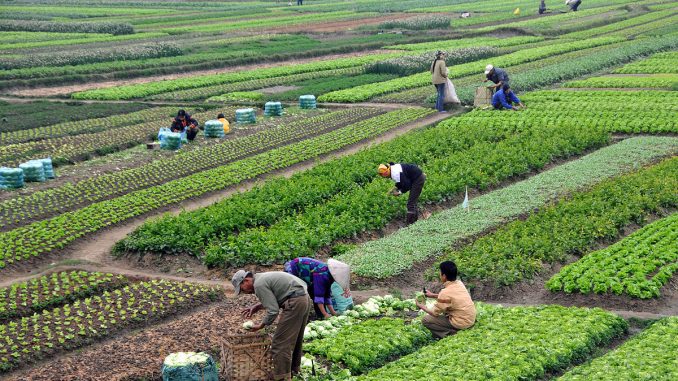
By Dipti Jain & Sayantan Bera
Farming activities comprise more than half of the total average monthly income for agricultural households, as per the latest survey by Nabard
New Delhi: Farmers may be looking for alternative avenues of income, but it is too soon to write off the significance of agriculture in rural India, data from the recently released Nabard All India Rural Financial Inclusion Survey (NAFIS) shows.
An initial reading of the survey findings seems to suggest that earnings from farm-related activities—cultivation and livestock rearing—contributed just 43% to average monthly income of agricultural households in 2015-16, suggesting the growing importance of non-farm sectors in rural India.
However, disaggregated data on wage earnings of these households, accessed by Mint from Nabard, shows that about 40% of the wage earnings of these families came from working as farm hands; for non-farm households this ratio is about 25%.
So when wages from working as farm hands are added to earnings from agriculture, the contribution of farming activities to average monthly earnings of agricultural households rises to 57%, showing that bulk of their earnings is still farm-dependent (chart 1).
The survey defines an agricultural household as one that received at least ₹5,000 as the value of produce from agricultural activities such as cultivating crops, horticulture, plantation, animal husbandry, poultry, fishery, etc, and which has least one member self-employed in agriculture.
A comparison with a similar survey carried out by the National Sample Survey Office (NSSO) in 2012-13 shows a decline in share of cultivation and livestock rearing in average incomes of agricultural households: from 60% in 2012-13 to 43% in 2015-16.
However, we need to keep in mind two big caveats while comparing the two surveys. One, the NAFIS survey is based on a stricter definition of agricultural household (NSSO’s threshold of income from agriculture was lower at ₹3,000), and a wider definition of rural areas.
Second, the NAFIS survey provides data for 2015-16, one of the worst drought years in recent memory. 11 states declared a drought that year, and about half of India’s districts received deficit rains even as production of food grains fell to a five-year-low. This means income from farming was depressed by nature that year.
The fact that farm incomes comprised 57% of overall incomes of agricultural households despite a drought only reinforces the importance of the farm economy in rural India. Agricultural households accounted for 58% of all rural households, data from the 2012-13 NSSO survey shows.
“A key takeaway from the Nabard survey is that for an agricultural household, the earnings from cultivation and wages are the two most important sources… this dependence on wages despite the slow growth in wages shows the crisis in rural India,” said Himanshu, associate professor of economics at Delhi’s Jawaharlal Nehru University. The NAFIS data also shows that 13% of agricultural households had only a single share of income, while 50% of them had two sources of income. Among non-agricultural households, most households (79%) depended on a single income stream (chart 2).
Households with the highest number of income sources also reported higher average monthly income on average.
With successive droughts in 2014-15 and 2015-16, and with farm land getting consolidated, farmers have had no other option but to look for other sources of income to hedge their bets, said Shweta Saini, senior consultant at ICRIER (Indian Council for Research on International Economic Relations).
The NAFIS survey also reinforces the importance of wage income for much of rural India. The highest number of people across occupations (barring cultivation and animal farming) were engaged in agricultural labour works in 2015-16, the survey shows (chart 3).
Poor wage growth in both farm and non-farm sectors over the past few years means that distress levels among the wage-dependent section of the rural population has gone up. While agriculture’s share in the economy and household earnings are declining as expected, the number of people dependent on agriculture is not, said Himanshu. “There is an oversupply of labour in rural India due to lack of jobs and this is showing up in lower wages,” said Himanshu (chart 4).
The slowdown in the construction sector, which accounted for most of new non-farm jobs in the rural sector in the past decade, also seems to have weighed on wage growth in rural India.
Source: Livemint

Leave a Reply